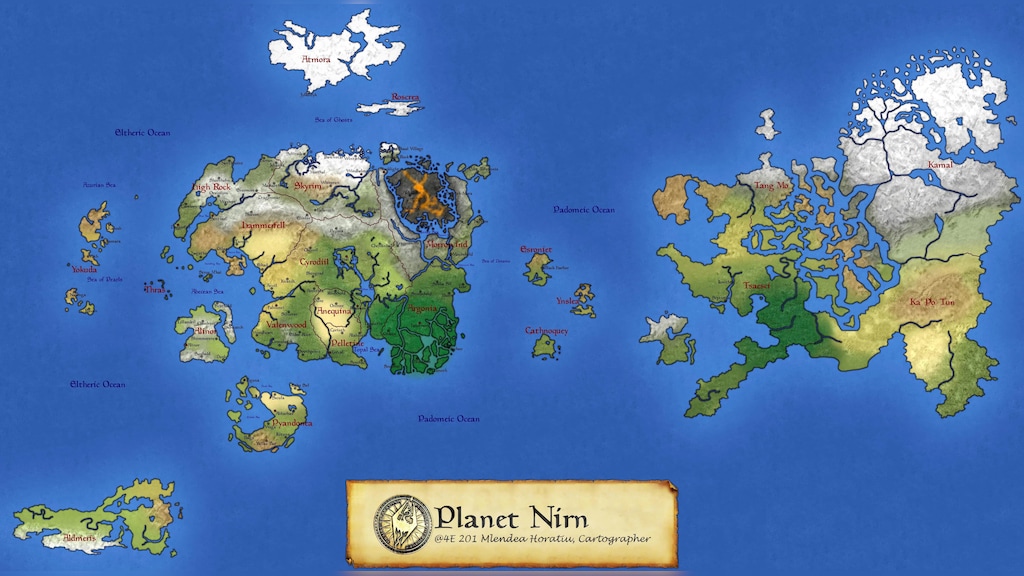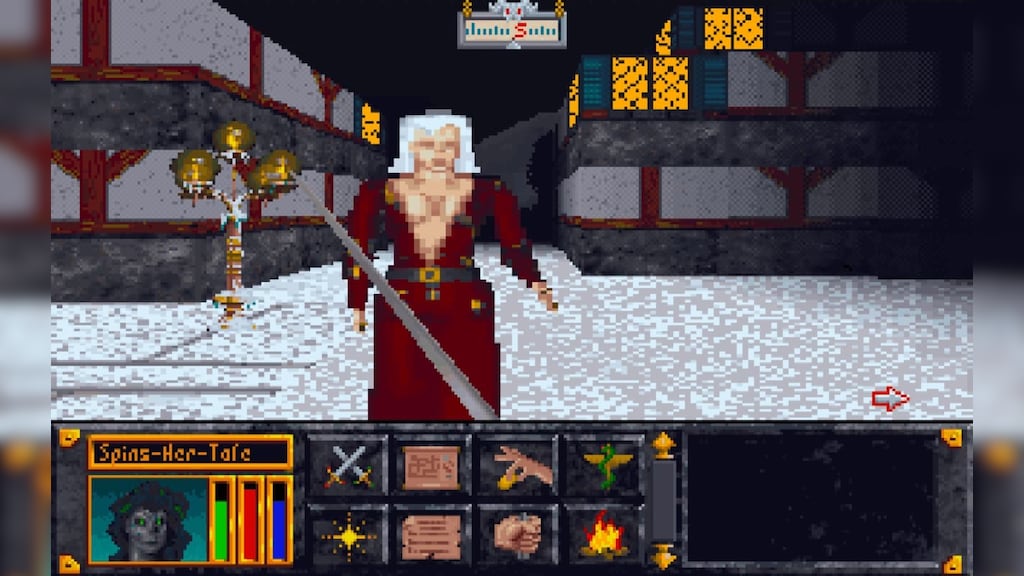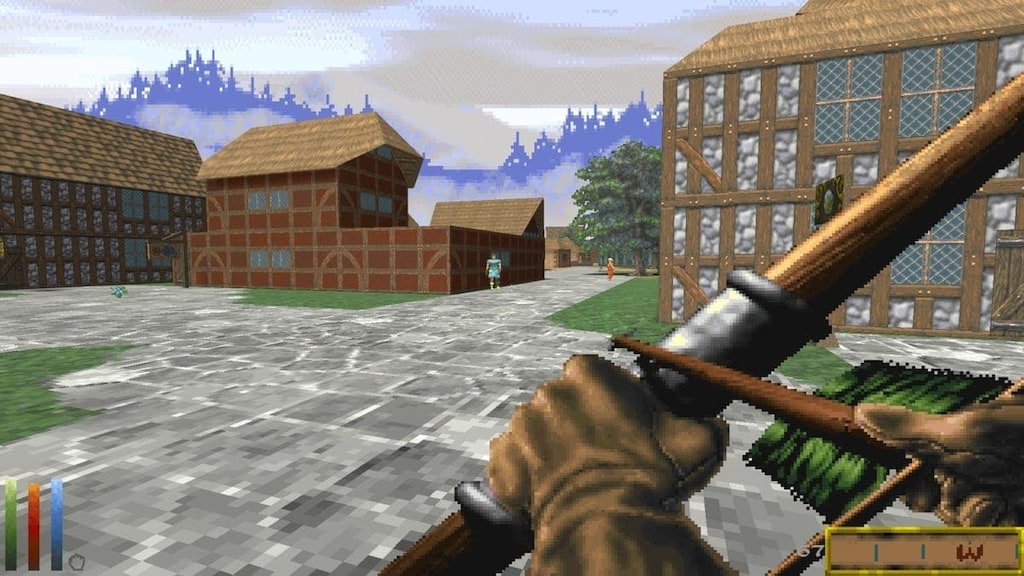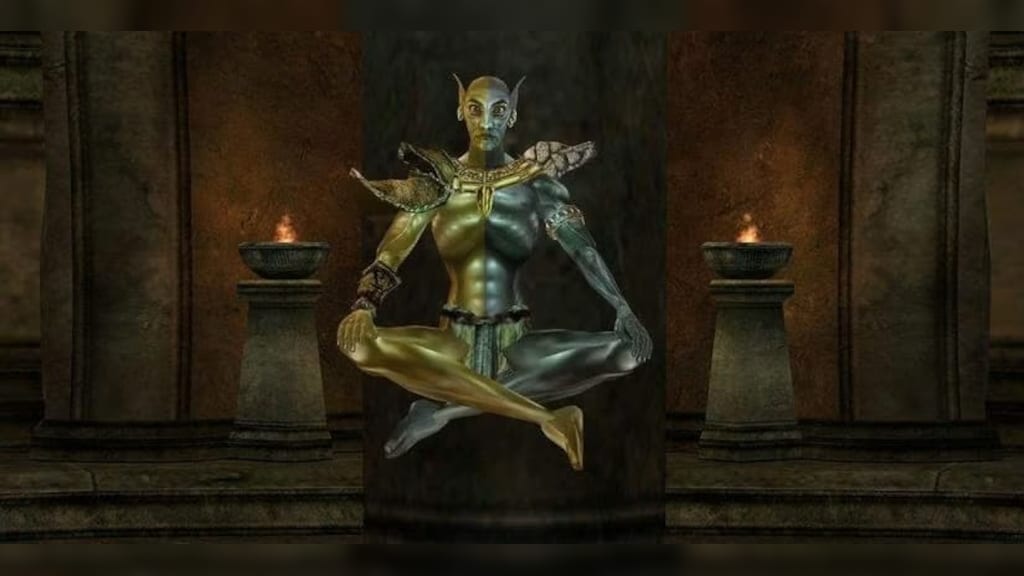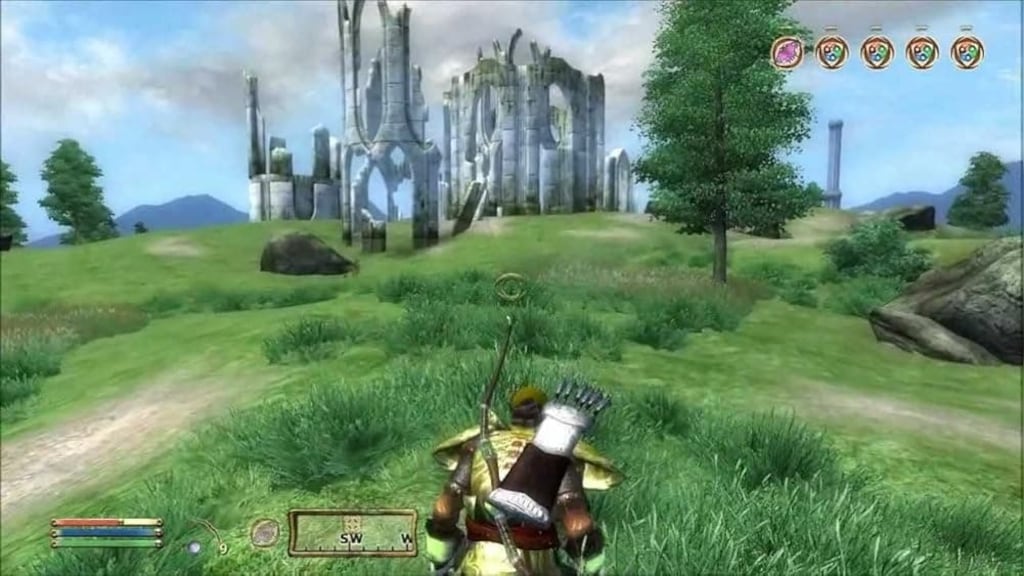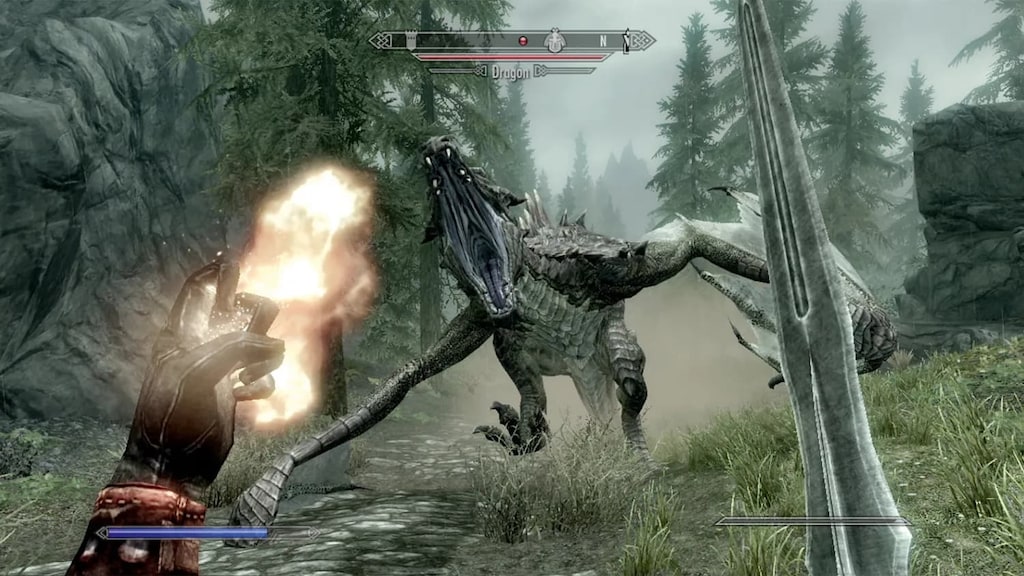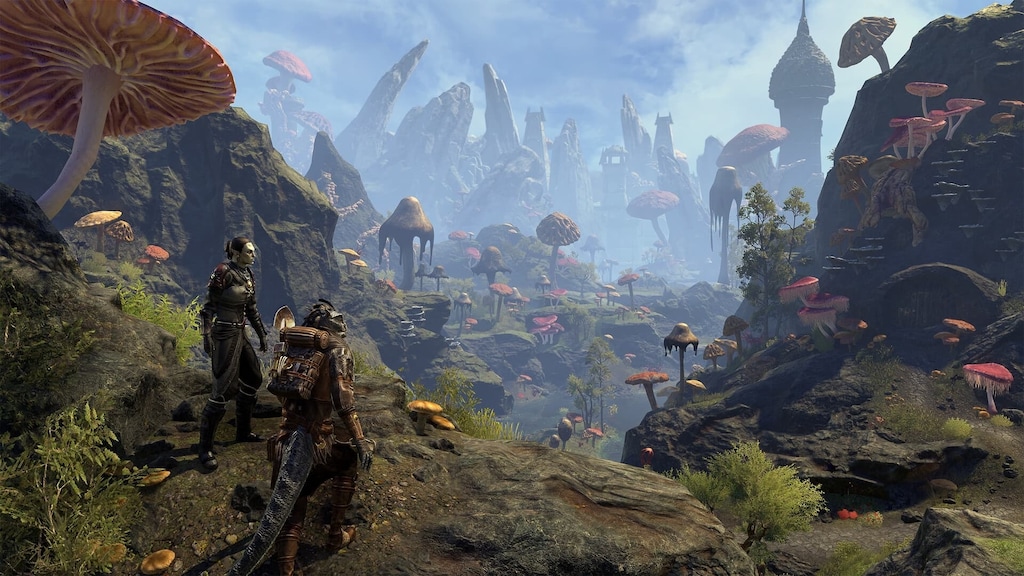We all know that The Elder Scrolls lore is considered the most complex in gaming history, but have you ever wondered how it came to life?
The story of all Elder Scrolls games unfolds across diverse provinces of the continent of Tamriel, a land of many cultures, religions, races, and turbulent events whose history stretches back around 8,000 years. Players can learn about its past by reading ancient books scattered throughout the game world, interacting with NPCs, and exploring forgotten locations that hold valuable knowledge.
Every encounter, fight, discovery, or even a walk through this reality demonstrates how vast and believable this world is, ultimately provoking reflection – who created Tamriel? Was there a single creator or many? And how exactly did someone invent such a complex reality that feels truly alive? It’s time to find the answer, so welcome to our TES lore explained!
The Elder Scrolls Lore: Who Created the World of Tamriel?
The Birth of the World of Tamriel – Bethesda Lore Writers
It all began with Bethesda Softworks, a small game developer founded in 1986 by Christopher Weaver. Initially, the company wasn’t involved in fantasy or RPG. Instead, it focused on sports games, such as hockey and American football simulators. But that was soon to change!
In the early 1990s, Julian Lefay, known as the father of TES, worked at Bethesda. He was a technical genius, but also had a great passion for tabletop RPGs like Dungeons & Dragons. It was he who initiated the idea of creating a fantasy game that would be open-world, non-linear, and, above all, massive. His team, along with Ted Peterson and Vijay Lakshman, was initially tasked with creating an action gladiator game called Arena. The developers envisioned a linear structure centered around arena combat, but that quickly changed.
The developers became so engaged in expanding the game world, its factions, lands, religions, and history, that arena combat ceased to be the primary focus. The project spiraled out of control in the most positive sense! Bethesda decided to experiment, and instead of releasing an action game, they launched TES: Arena in 1994, a massive RPG that didn’t hold players’ hands but threw them into the vast world of Tamriel. And that’s when the lore came to life.
The Chaotic Origin of the World
Unlike many other fantasy series, the narrative design process of Arena wasn’t managed from start to finish by a single person. It was a living organism – changed, overwritten, and reinterpreted over the years. Some of the elements that would later become canon began to take shape: the kingdoms of Tamriel, the Dunmer race, factions, magic, Daedric books, and a powerful creation story rooted in mythology.
However, the real breakthrough came in 1996 with the release of TES II: Daggerfall. That’s when Julian Lefay and Ted Peterson, along with a new team, significantly expanded the lore timeline, introducing the mechanics of politics, kingdoms, genealogy, religious cults, gods, and demons. It was the beginning of an era of deep, multi-layered lore, inspired by both real-world history and classic fantasy.
Michael Kirkbride and Universe Origins
Finally, another important figure in the history of TES lore entered the picture – Michael Kirkbride, who joined Bethesda around the time of TES III: Morrowind (2002). His influence is most noticeable in the strangeness and depth of this installment in the series. Kirkbride was not only a writer but also a mystic of sorts – his approach to lore was more like creating a religion or philosophy than writing a game’s plot.
He’s responsible for the presence of the most philosophical and metaphysical ideas hidden in this rich world. He created texts about gods who are the dreams of other gods, divinity as self-awareness, the idea of Tamriel as an illusion, and the vital achievement of overcoming it to become the narrator of one’s own world.
While all that sounds like a metaphysics lecture, Kirkbride managed to incorporate this content into the game world as myths, stories, books, works of art, and mysterious symbols. His work continues to divide the fanbase to this day – some adore him, others consider him a madman – but no one can deny that he gave TES its unique character. Even after leaving Bethesda, his fan lore continues to influence interpretations of the game’s environment.
Morrowind – A Legendary Mythology
Morrowind marked the point when TES lore reached its full potential. The game explored politics, religion, colonialism, heresy, gods, and mortals. It offered a world that wasn’t black and white, but morally disturbing.
Vivec, one of the central characters, was a god, a poet, a warrior, and a murderer. Or was he just a myth? These were the questions posed by Morrowind, the brainchild of Kirkbride, Peterson, and their colleagues. Lore ceased to be a story background, as it became a tool for asking questions about power, faith, and reality.
Later installments – Development and Simplification
With the releases of Oblivion (2006) and Skyrim (2011), the series gained immense popularity. However, some lore fans noticed that something was changing. Games were becoming more accessible, less dense with text and esotericism. Yes, the story was still rich, the empire fell, the Daedra entered the world, and dragons returned, but the tone had changed. It became more mainstream.
Many of the old lore creators left, but new writers, including Emil Pagliarulo and Bruce Nesmith, aimed to maintain consistency. The lore continued, although with less madness.
TES Online and a New Chapter in the Series’ History
In 2014, ZeniMax Online released TES Online – an MMO set hundreds of years before the events of the main games. The studio took on a challenging task of expanding the vast lore while simultaneously creating something new.
Despite initial concerns, ESO proved surprisingly faithful to the series’ spirit. Thanks to a team of lore masters (led by Lawrence Schick and Leamon Tuttle), hundreds of new books, stories, tales, and myths appeared in the game world. ESO not only continued the legacy of TES but sometimes even adopted Kirkbride’s wildest ideas and incorporated them into the canon.
And that’s how TES lore came to life – through cooperation, a passion for classic tabletop role-playing games, technical genius, and metaphysical reflection. This story proves that if the creators hadn’t let their imaginations run wild during Arena’s creation, we might never have had the opportunity to explore the rich world of the TES series. Will TES 6 continue the series’ legendary legacy? Only time will tell, but fans of the saga may also be interested in the upcoming game created by Ted Peterson and Julian Lefay themselves – The Wayward Realms.





